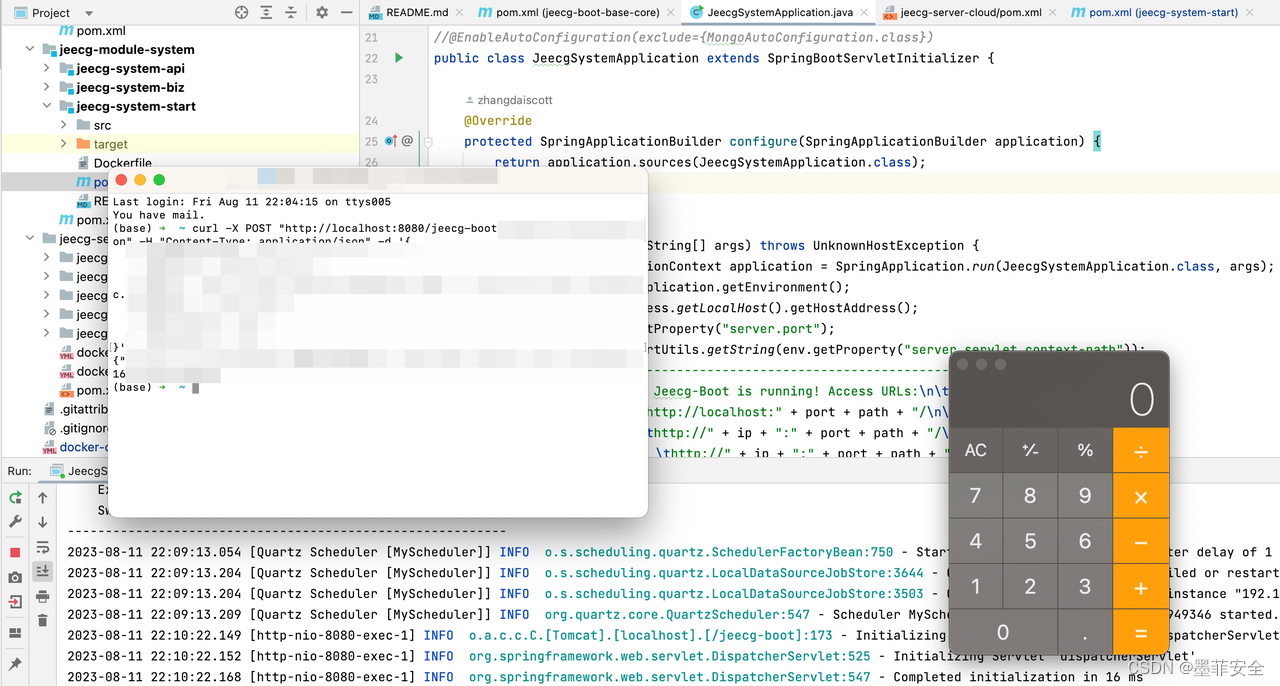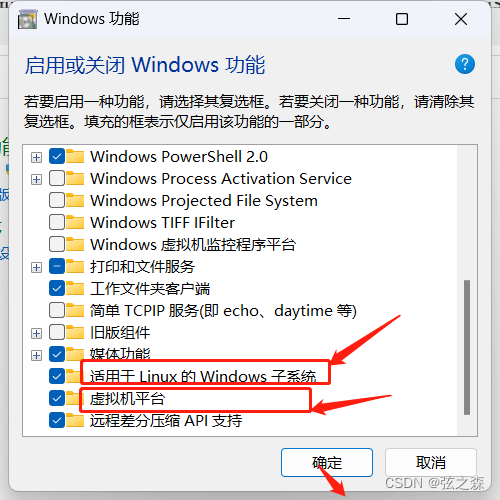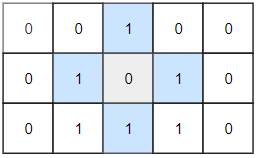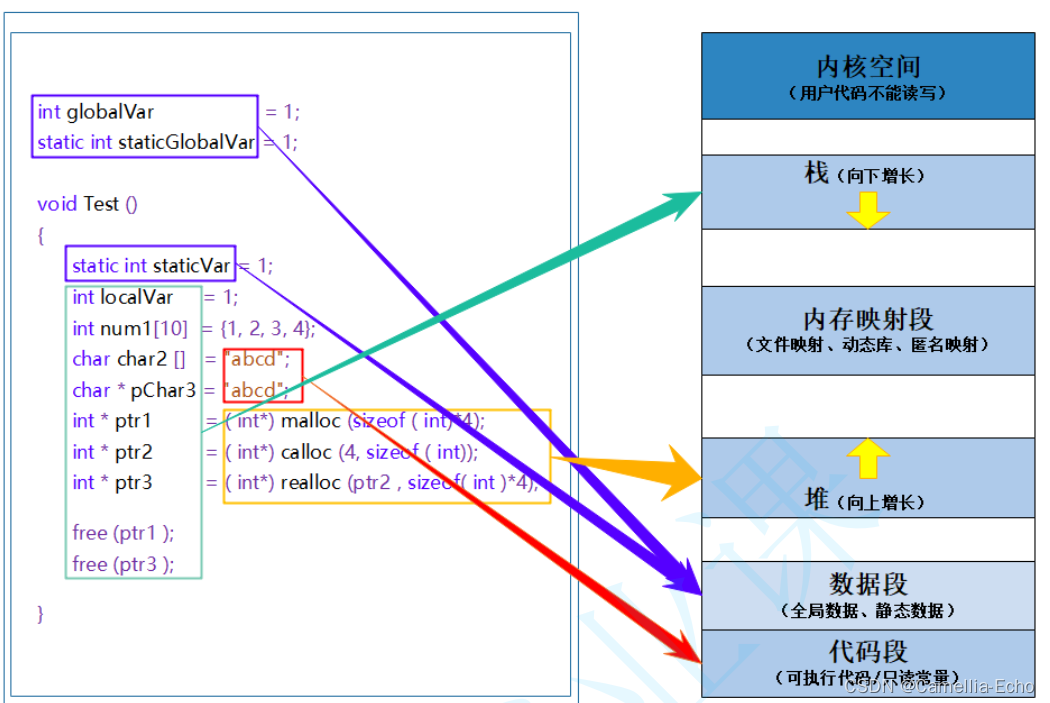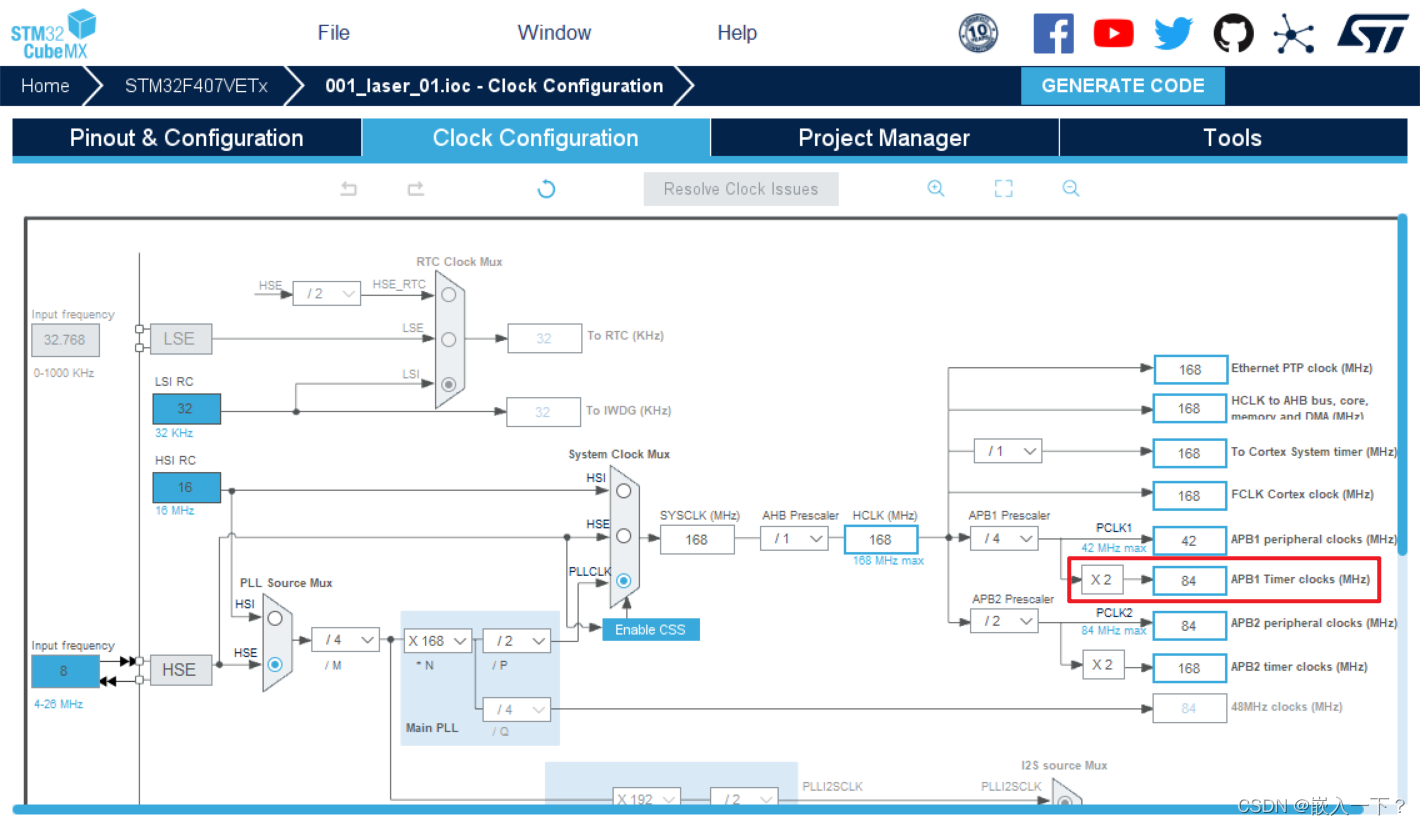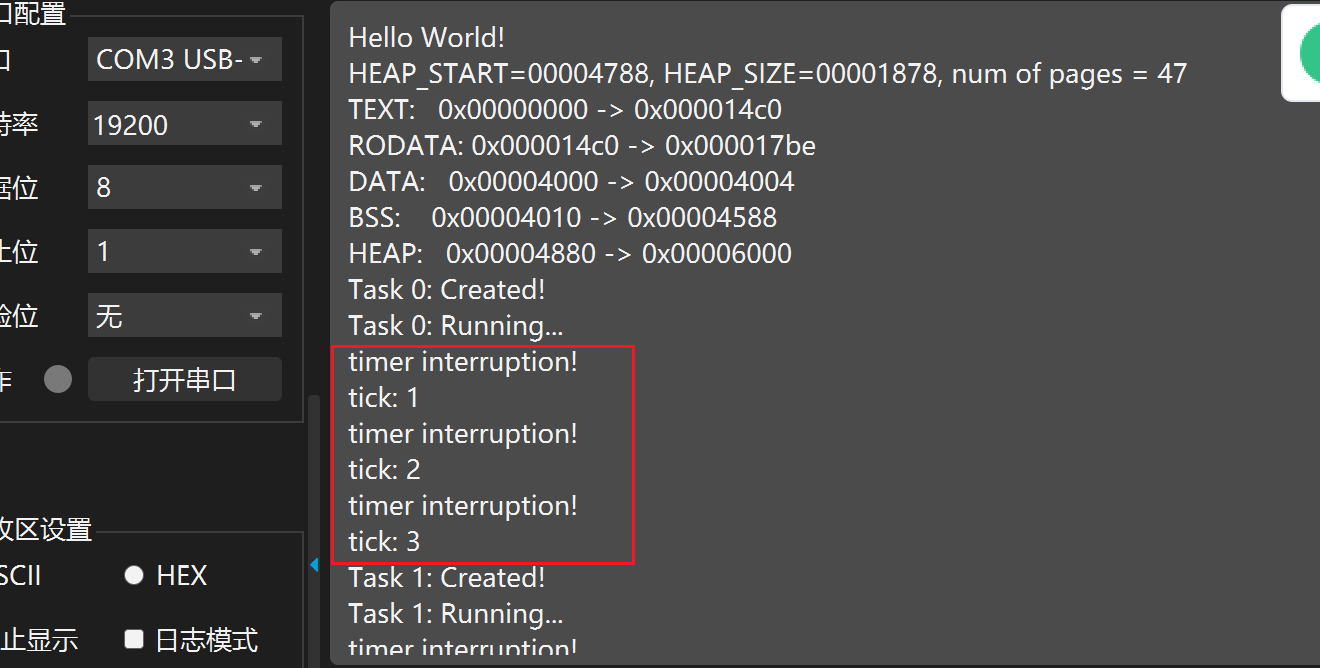前面介绍过通过代码的方式模拟键盘按下,博文如下:
C#通过代码的方式模拟键盘按下_c# 模拟键盘输入_zxy2847225301的博客-CSDN博客
这个博文是通过win32的keybd_event实现,可能会未来的window版本中被淘汰(不是我说的,看到老外一篇文章中说的)
本文的内容参考自:
How to Send Inputs using C# - CodeProject
本文的主要核心是利用了win32的函数SendInput,将会实现并演示如下的效果:
演示效果1: 点击按钮,然后模拟键盘输入,把输入的内容显示到文本框上
演示效果2: 点击按钮,然后控制鼠标光标移动(对角线移动)
演示效果3: 点击按钮,然后控制鼠标光标移动到演示效果1中的那个按钮的位置上,并实现点击,接着就会看到效果1中的效果(模拟键盘输入,把输入的内容显示到文本框上)
本文测试环境:
vistual studio 2017
.net framework 4.0
winform
步骤如下:
1 新建winform项目,.net framework选4.0,名为SendInputDemo,并新建类Win32SendInputApi并编辑如下:
using System;
using System.Collections.Generic;
using System.Linq;
using System.Runtime.InteropServices;
using System.Text;
namespace SendInputDemo
{
public class Win32SendInputApi
{
/// <summary>
/// 键盘输入参数
/// </summary>
[StructLayout(LayoutKind.Sequential)]
public struct KeyboardInput
{
public ushort wVk;
public ushort wScan;
public uint dwFlags;
public uint time;
public IntPtr dwExtraInfo;
}
/// <summary>
/// 鼠标输入参数
/// </summary>
[StructLayout(LayoutKind.Sequential)]
public struct MouseInput
{
public int dx;
public int dy;
public uint mouseData;
public uint dwFlags;
public uint time;
public IntPtr dwExtraInfo;
}
/// <summary>
/// Hardware输入参数,Hardware不知道是什么设备,应该类似于传感器输入之类的设备(usb输入或者串口输入)
/// </summary>
[StructLayout(LayoutKind.Sequential)]
public struct HardwareInput
{
public uint uMsg;
public ushort wParamL;
public ushort wParamH;
}
[StructLayout(LayoutKind.Explicit)]
public struct InputUnion
{
[FieldOffset(0)] public MouseInput mi;
[FieldOffset(0)] public KeyboardInput ki;
[FieldOffset(0)] public HardwareInput hi;
}
public struct Input
{
public int type;
public InputUnion u;
}
[Flags]
public enum InputType
{
Mouse = 0, //鼠标
Keyboard = 1,//键盘
Hardware = 2
}
/// <summary>
/// 键盘状态
/// </summary>
[Flags]
public enum KeyEventF
{
KeyDown = 0x0000, //键盘按下
ExtendedKey = 0x0001, //不懂,看名字像追加键
KeyUp = 0x0002, //键盘抬起
Unicode = 0x0004, //不懂
Scancode = 0x0008 //不懂
}
/// <summary>
/// 鼠标参数类型
/// </summary>
[Flags]
public enum MouseEventF
{
Absolute = 0x8000,
HWheel = 0x01000,
Move = 0x0001, //鼠标移动
MoveNoCoalesce = 0x2000,
LeftDown = 0x0002, //鼠标左键按下
LeftUp = 0x0004, //鼠标左键抬起
RightDown = 0x0008, //鼠标右键按下
RightUp = 0x0010, //鼠标右键抬起
MiddleDown = 0x0020, //鼠标中键按下
MiddleUp = 0x0040, //鼠标中键抬下
VirtualDesk = 0x4000, //不懂,看名字像是虚拟桌面
Wheel = 0x0800, //鼠标滚轮
XDown = 0x0080,
XUp = 0x0100
}
[DllImport("user32.dll", SetLastError = true)]
public static extern uint SendInput(uint nInputs, Input[] pInputs, int cbSize);
[DllImport("user32.dll")]
public static extern IntPtr GetMessageExtraInfo();
/// <summary>
/// 获取鼠标的坐标
/// </summary>
/// <param name="lpPoint"></param>
/// <returns></returns>
[DllImport("user32.dll")]
public static extern bool GetCursorPos(out POINT lpPoint);
[StructLayout(LayoutKind.Sequential)]
public struct POINT
{
public int X;
public int Y;
}
/// <summary>
/// 设置鼠标的位置
/// </summary>
/// <param name="x"></param>
/// <param name="y"></param>
/// <returns></returns>
[DllImport("User32.dll")]
public static extern bool SetCursorPos(int x, int y);
}
}
2 winform的UI布局如下:

3 实现演示效果1: 点击按钮,然后模拟键盘输入,把输入的内容显示到文本框上
'触发键盘按下'按钮的代码逻辑如下:
public partial class Form1 : Form
{
public Form1()
{
InitializeComponent();
this.btnPress.Click += new System.EventHandler(this.btnPress_Click);
}
/// <summary>
/// 触发键盘按下按钮点击事件
/// </summary>
/// <param name="sender"></param>
/// <param name="e"></param>
private void btnPress_Click(object sender, EventArgs e)
{
this.txtKeyInput.Focus();
Input[] inputs = new Input[]
{
new Input
{
type = (int)InputType.Keyboard,
u = new InputUnion
{
ki = new KeyboardInput
{
wVk = 0,
wScan = 0x02, // 数字1
dwFlags = (uint)(KeyEventF.KeyDown | KeyEventF.Scancode),
dwExtraInfo = Win32SendInputApi.GetMessageExtraInfo()
}
}
}
};
Win32SendInputApi.SendInput((uint)inputs.Length, inputs, Marshal.SizeOf(typeof(Input)));
this.txtKeyInput.Focus();
}
}运行效果如下:
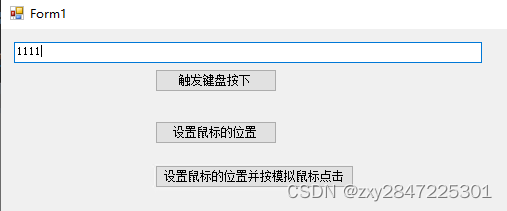
每点一次按钮,就录入一个1
键盘的16进制编码可以参考这个网址:Keyboard scancodes: Keyboard scancodes

如上图中的01代表键盘上的ESC键,02 数字键1或者!键(在笔记本键盘上,这两个键是公用的),相信你能看懂后面编码对应的按钮含义了
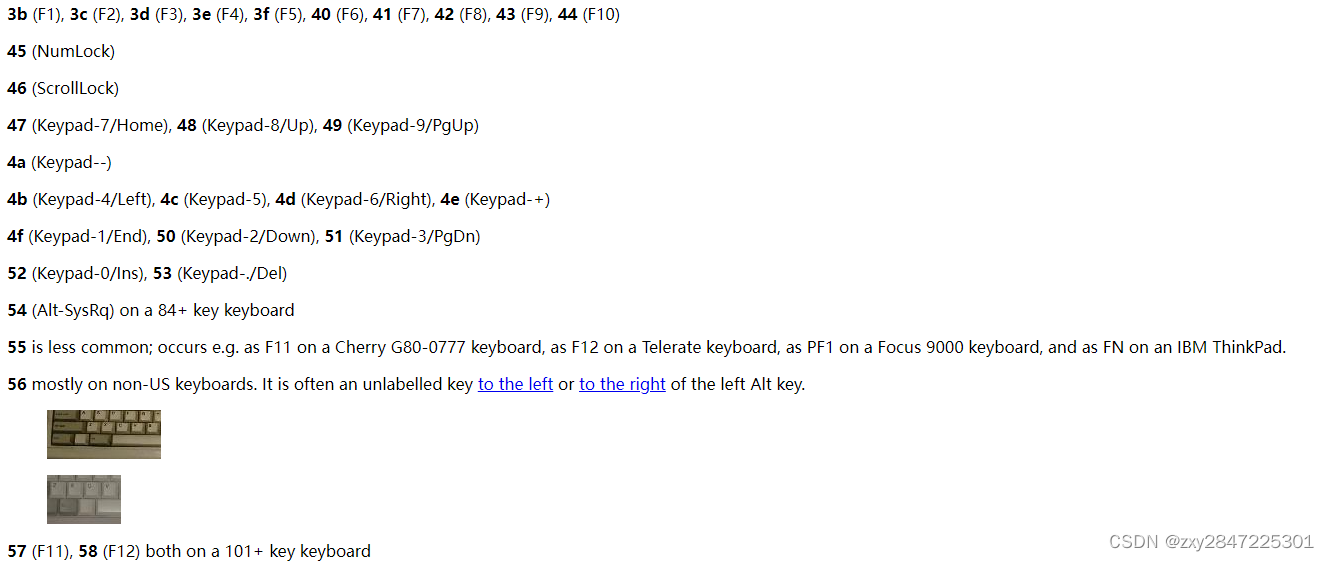

4 实现演示效果2: 点击按钮,然后控制鼠标光标移动(对角线移动)
'设置鼠标的位置'按钮的代码逻辑如下:
using System;
using System.Collections.Generic;
using System.ComponentModel;
using System.Data;
using System.Drawing;
using System.Linq;
using System.Runtime.InteropServices;
using System.Text;
using System.Threading;
using System.Windows.Forms;
using static SendInputDemo.Win32SendInputApi;
namespace SendInputDemo
{
public partial class Form1 : Form
{
public Form1()
{
InitializeComponent();
this.btnSetCurPosition.Click += new System.EventHandler(this.btnSetCurPosition_Click);
}
/// <summary>
/// 设置鼠标的位置按钮点击事件
/// </summary>
/// <param name="sender"></param>
/// <param name="e"></param>
private void btnSetCurPosition_Click(object sender, EventArgs e)
{
for (int i = 0; i <150; i+=20)
{
POINT lpPoint;
Win32SendInputApi.GetCursorPos(out lpPoint);
Win32SendInputApi.SetCursorPos(lpPoint.X + i, lpPoint.Y +i);
Thread.Sleep(100);
}
}
}
}
上面的逻辑是:获取到当前鼠标光标的位置,然后赋予鼠标光标新的位置,每次设置睡眠100毫秒才能看到效果
运行效果:
可以看到鼠标光标在按钮"设置鼠标的位置"上点击后,鼠标光标逐渐以对角线的方式往右下角移动
5 实现演示效果3: 点击按钮,然后控制鼠标光标移动到演示效果1中的那个按钮的位置上,并实现点击,接着就会看到效果1中的效果(模拟键盘输入,把输入的内容显示到文本框上)
'设置鼠标的位置并按模拟鼠标点击'的代码逻辑如下:
using System;
using System.Collections.Generic;
using System.ComponentModel;
using System.Data;
using System.Drawing;
using System.Linq;
using System.Runtime.InteropServices;
using System.Text;
using System.Threading;
using System.Windows.Forms;
using static SendInputDemo.Win32SendInputApi;
namespace SendInputDemo
{
public partial class Form1 : Form
{
public Form1()
{
InitializeComponent();
this.btnPress.Click += new System.EventHandler(this.btnPress_Click);
this.btnSetCurPosition.Click += new System.EventHandler(this.btnSetCurPosition_Click);
this.btnMouseClick.Click += new System.EventHandler(this.btnMouseClick_Click);
}
/// <summary>
/// 设置鼠标的位置并按模拟鼠标点击按钮点击事件
/// </summary>
/// <param name="sender"></param>
/// <param name="e"></param>
private void btnMouseClick_Click(object sender, EventArgs e)
{
//PointToScreen为btnPress控件转屏幕坐标
Point pointScreen =this.btnPress.PointToScreen(new Point(0,0));
//Point pointScreen =this.btnPress.PointToScreen(new Point(0,0))可以换成
//这样的写法Point pointScreen = this.PointToScreen(new Point(btnPress.Location.X, btnPress.Location.Y));
Win32SendInputApi.SetCursorPos(pointScreen.X+10, pointScreen.Y+1);
Input[] inputs = new Input[]
{
new Input
{
type = (int) InputType.Mouse,
u = new InputUnion
{
mi = new MouseInput
{
dx =pointScreen.X+10,
dy =pointScreen.Y+1,
dwFlags = (uint)(MouseEventF.LeftDown), //鼠标左键按下
dwExtraInfo = Win32SendInputApi.GetMessageExtraInfo()
}
}
},
new Input
{
type = (int) InputType.Mouse,
u = new InputUnion
{
mi = new MouseInput
{
dx =pointScreen.X+10,
dy =pointScreen.Y+1,
dwFlags = (uint)(MouseEventF.LeftUp), //鼠标左键抬起
dwExtraInfo = Win32SendInputApi.GetMessageExtraInfo()
}
}
}
};
Win32SendInputApi.SendInput((uint)inputs.Length, inputs, Marshal.SizeOf(typeof(Input)));
}
}
}
想要在'触发键盘按下'按钮(名为btnPress)触发自动按钮逻辑,就得通过PointToScreen把控件的坐标转换为计算机桌面的坐标(以前做Unity 3D的时候经常看到这种骚操作),然后把转换后的坐标作为鼠标光标的位置,最后通过模拟鼠标左键按下和抬起,一定要鼠标按下和抬起一起使用才有效,因为鼠标按下和抬起同时完成才算实现鼠标按下的逻辑。
运行效果如下图:
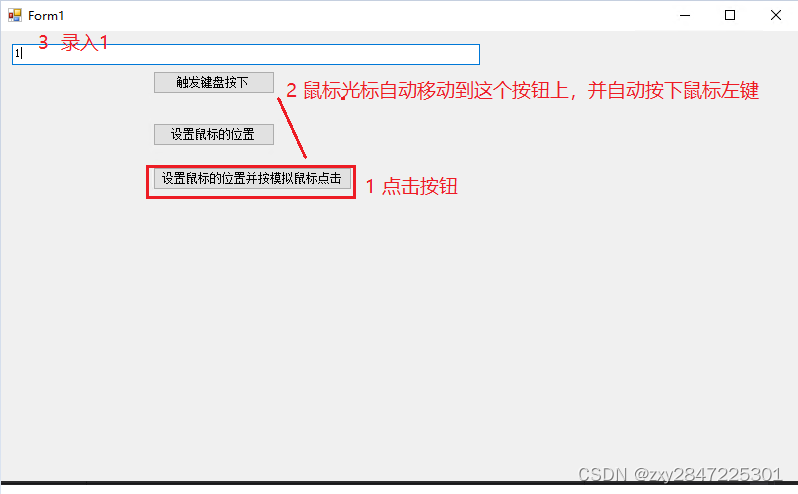
好了,本文的内容到此结束(Tips:在线招个亲,最近家里逼得太急了,老铁有亲戚朋友啥的适龄未婚、活的女的都可以介绍哈,本人情况:男,1993出生,广州工作,广东人,硕士毕业,其它的可以私聊)


